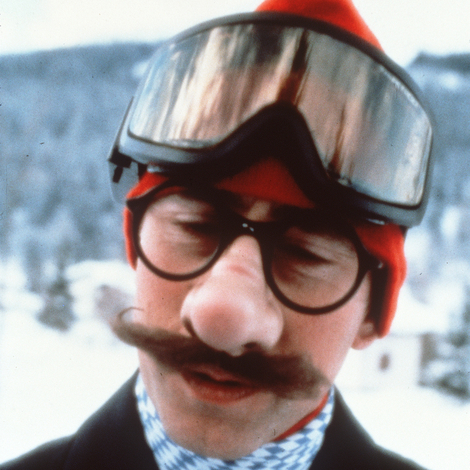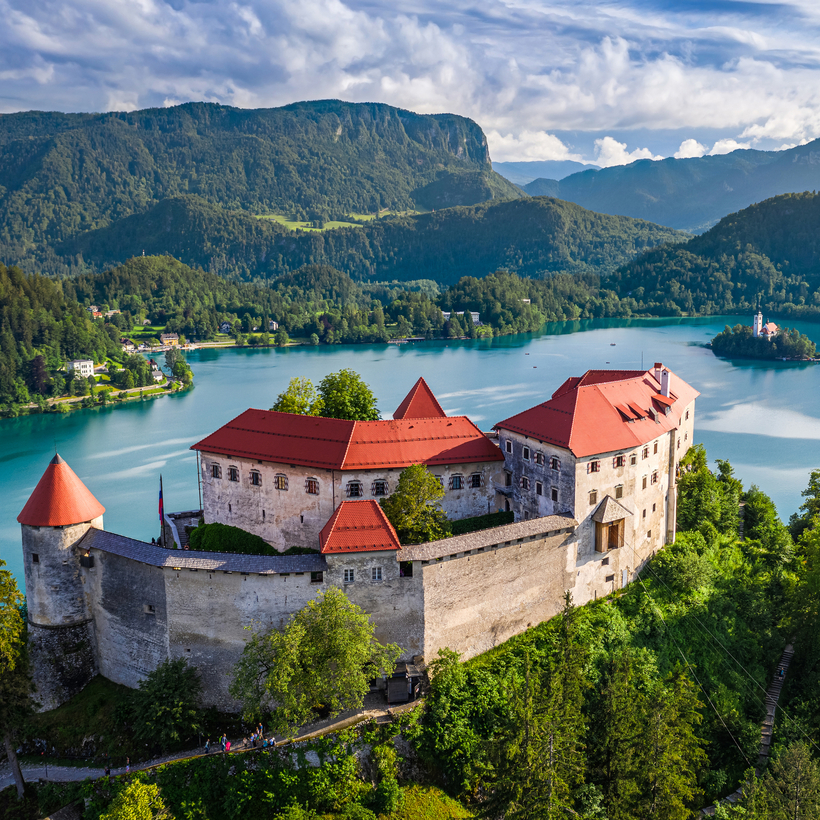Slovenia had never much tempted me, but in truth, I knew little about this country in the middle of Europe. A few months ago, a friend suggested it as a place for people who love Italy but not its prices or crowds.
The drive from Venice’s Marco Polo Airport to my first stop, the Adriatic resort of Portorož, took only two hours. That was the first of many revelations. There would be many more over seven days full of delicious meals, abundant nature, and just the right amount of luxury. In just one country, I experienced a complete European grand tour, with vineyards, castles, emerald rivers, freshly caught trout and freshly picked persimmons, a sexy coastline, and a shining capital city, Ljubljana. All of it was choreographed by Black Tomato, a high-end tour operator that creates immersive private itineraries.
Bordering Austria, Italy, Croatia, and Hungary, Slovenia is the size of New Jersey, with roughly 60 percent of its territory covered in forest. You can ski the Julian Alps in the morning—Slovenians are regular Olympic medalists in winter sports—dive into the Adriatic in the afternoon, and end the day at a world-class restaurant.

Its history is one of occupation, invaders, and empire: Holy Roman, Austro-Hungarian, Hapsburg, Venetian, Ottoman, French, Italian, German. But today, prosperous, stable Slovenia is coming into focus as some kind of European ideal, not just the geographical heart of the continent but the cultural one as well.
“Each nation or tribe left something that remains today and made us who we are,” said Gregor Jevšček, one of my guides for the week. Including the language—Slavic, but utilizing the Latin alphabet. I have no doubt that Melania Trump (née Knauss), Slovenia’s most famous expat (besides NBA superstar Luka Dončić), is indeed a polyglot: everyone I encountered spoke near-perfect English, and other languages too.
Because of its highly educated population and proximity to Central Europe, Slovenia was economically stronger and more developed than all the other republics when it was part of Yugoslavia. Josip Broz Tito, who was half Slovenian, led the Socialist Federal Republic for 35 years and built the country’s best hospital in Ljubljana, where he died, in 1980.
After a 10-day war in 1991, Slovenia was the first (by a hair) to win independence from Belgrade, which signaled the beginning of the end for Yugoslavia. Later, it was the first to adopt the euro and to gain membership to the European Union, in 2004. (By contrast, Croatia, its southern neighbor, only achieved full membership in 2023.)

As I traveled through the country, glimmers of the past were revealed at every turn. In Piran, the port town near Portorož, I scaled the 17th-century bell tower that is a replica of the campanile in Venice’s San Marco Square. Gelaterias specialized in flavor profiles such as Sacher and Linzer, types of Austrian tortes. Near Ljubljana, an allée of linden trees was planted for Napoleon’s young bride during his brief rule there.
Slovenia is perhaps the European country that others are contorting themselves to be. “We have lived biodynamically for centuries,” Valerija Simčič tells me at her husband’s vineyard in the Goriška Brda region, tasting a Ribolla white made from a golden grape endemic to this corner of Europe. “Farm-to-table is in the Slovenian DNA.”
Some of the country’s most elegant wines are produced at Domaine Marjan Simčič, where hilly vineyards straddle Italy and Slovenia. Here, the soil is known for its minerality, and burja winds from the Alps combine with thermal Adriatic air for an optimal grape-growing climate.

My daughter lives nearby in Italy, and joined me for the first few days of the trip. As we moved north, the valley of the Soča River was so exquisitely pale blue that I asked Mateja Komac, my guide for the week, to stop alongside a small gorge so we could take in the splendor of the Julian Alps, surging in the distance.
Slovenia is perhaps the European country that others are contorting themselves to be.
This is no soft-serve mountain range; these are spiky, forbidding peaks where some of the bloodiest battles were fought during World War I. “This is the picturesque front,” Ernest Hemingway wrote in A Farewell to Arms, a war story and a love story about the Battle of the Isonzo (the Italian word for Soča), where the Italians fought the Kaiser’s armies.

To reach our hotel in Kranjska Gora, we ascended and descended the vertiginous Vršič Pass, the zigzag road Hemingway referred to in his masterpiece. The former supply route with 50 hairpin turns was built by Russian prisoners of war in 1915. Many were killed in avalanches, and behind turn No. 8 stands an Orthodox chapel dedicated to their memory.
Boutique Hotel and Restaurant Milka is like Slovenia—very small and very beautiful—complete with a two-star Michelin restaurant. Here, the eight-course menu is served without a crumb of hauteur. The hay ice cream smelled like mown grass and tasted like a summer evening, and my picture window overlooked a transparent lake and a heart-stopping skyline, where the mountains Škrbinjek and Vitranc pierced the sky.

In the morning, we hiked the Zelenci Reserve in Triglav National Park past sheep-filled pastures, wild-hazelnut groves, and bee panels. (Hapsburg empress Maria Theresa shared her love of beekeeping across her land.) We even scrambled along a defunct railway bed from Austro-Hungarian times that once led to Italy.
Our next stop was the resort town of Bled, where the Baroque Church of the Assumption soars above a sparkling turquoise lake. Vila Bled, a bold socialist structure that was once Tito’s summer residence, is now a hotel adorned with oversize chandeliers and murals depicting Tito’s partisans defeating the Germans. I stopped to admire a painting of the revolutionary himself, looking smart in a tan suit and teal tie. We drove 90 minutes to our hotel, Grad Otočec, a 13th-century fortress buffered by the Krka River. Strolling its banks between groves of weeping willows, I was uncertain what century I was inhabiting.

In the morning, I headed southeast to the White Carniola region and the town of Metlika that had been burned 17 times by Ottomans. My daughter and I paddled a canoe up the quiet Kolpa River, where dozens of blue herons basked on branches and rocks. “This is the no-man’s-land between Slovenia and Croatia,” declared Jevšček. Until recently, this slice of water was the border between the two countries.
Slovenia, like much of the world, was besieged by calamitous floods, mostly in the north, this past summer. But we had experienced only clear days and crisp evenings. That continued in my final stop, Ljubljana, where I switched out my outdoor gear for suede city boots.

Mateja led me around her elegant city of just under 300,000 people that is at once medieval, Roman, Baroque, Gothic, and thoroughly contemporary. After World War I, architect Jože Plečnik re-created Ljubljana with a modern, human-centric idiom. Using classical references like columns, pyramids, and obelisks (one is dedicated to Napoleon), he designed the central market, bridges, and promenades.
As Slovenia’s popularity grows, even more stylish spots are emerging. The latest, Ljubljana’s AS Boutique Hotel, opened in October, and among its three restaurants is Jaz by Ana Roš, one of Europe’s most celebrated chefs. “People arrive knowing nothing about Slovenia,” said Mateja. “But by the time they leave, they’re looking into real estate.”
This story was produced with assistance from Black Tomato
Marcia DeSanctis is a contributing writer at Travel + Leisure and writes essays and stories for Vogue, Town & Country, Departures, and BBC Travel. Her new book, a collection of travel essays called A Hard Place to Leave: Stories from a Restless Life, is out now


